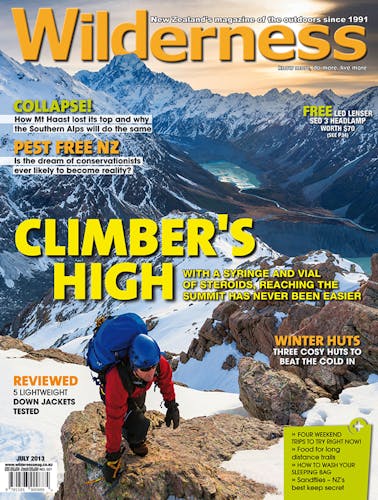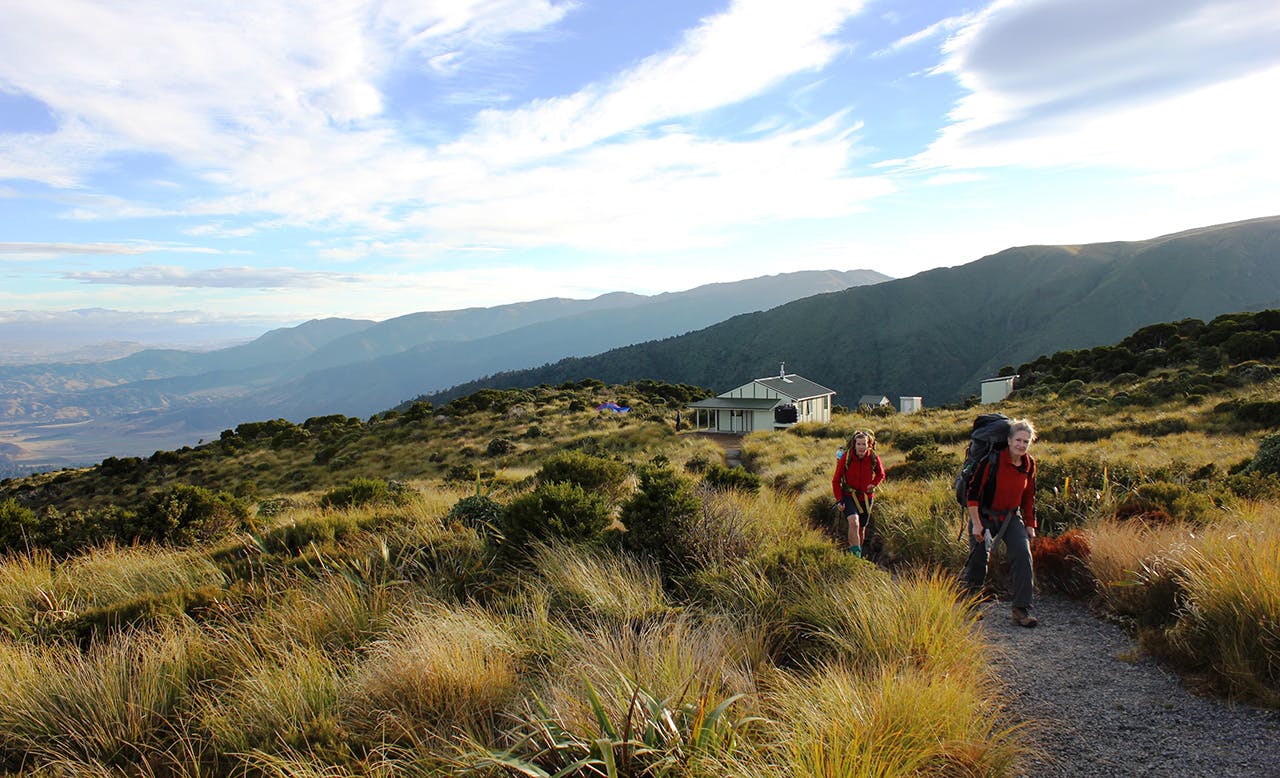- Time
- 5-7hr
- Access
- From the end of Renfrew Rd, east of Ohingaiti
- Map
- BL36
- GPX File
- Rangiwahia Hut via Deadmans Track (gpx, yo 23 KB)
- Your device does not support GPX files. Please try a different device.
Rangiwahia Hut, Ruahine Forest Park
After several visits to Rangiwahia Hut I have long been curious about the Deadmans Track which loops around from the same start point but travels up the opposite ridge and across the tops to the hut. It is a popular day loop taking around seven hours, but also an opportunity for an easy overnighter.
With a plan in mind to camp near tarns close to Mangahuia (1583m), my husband and I left the kids with grandparents and headed into the ranges.
Expecting an overgrown, rough track I was pleasantly surprised by the open easy trail through red beech. The beginning was typical of the Ruahines, heading straight up for a good half hour. There were steps in places which made the going a bit easier, but it was still a slog.
As the gradient eased, we reached a fascinating area of skeleton-twisted tree trunks rising high above smaller native shrubs. After an hour or so the vegetation became dominated by head-high leatherwood, the track still wide with occasional views over the valley below and across to the ridge that Rangiwahia Hut sits upon. The breeze was picking up by this stage and we began to question our plan to camp, but keeping an open mind we carried on and soon reached the alpine tussocks.
Visibility was poor and it was easy to think that the Mangahuia summit was closer than it really was. The tussock ridge was extremely exposed and we stopped to put on extra clothes, hats and gloves. We were glad to be well-prepared and have all the right gear with us.
The track through the tussock was marked with poles and in places was not easy to follow, but overall route finding was never a problem. After an hour or so we came to a point where we could see the final dip and then climb to Mangahuia. We walked down to a saddle at the head of a valley that runs into the Oroua River. It was a spectacular drop into the valley and the alpine vegetation in the saddle was stunning.
By this stage we had decided against camping and were moving on to the hut. We climbed from the saddle to Mangahuia, and were well and truly buffeted by the winds as we started our descent towards Rangiwahia Hut. We paused for a brief break at the signposted intersection where the route continues on along the Whanahuia Range and Triangle Hut before continuing on our way.
As we descended the ridge we became more sheltered from the wind and the journey turned into a pleasant stroll through the tussock. The main track has been so eroded along here that side tracks have appeared and these made for much easier walking. Shedding layers as we went, it took a little more than an hour to reach the hut.
Rangiwahia Hut is a 12-bunk serviced hut, the highlight being the two new toilets. Since our visit, the toilets (and woodshed) have been painted by a local artist and blend in beautifully with the surroundings. Although there were bunks to spare we chose to pitch our tent in the small campsite and try out our new tramping mattresses.
Rising early the next morning, we breakfasted and headed on our way down the Rangiwahia Track. A major upgrade is being undertaken on this track and it was already starting to make a real difference. By June 2013 there will be a completely new track zigzagging up and over a large slip dating from 1999 and avoiding a difficult detour.
As it was, we still needed to clamber our way up and over the slip, but by 9.30am we were back at the car and on our way to Kimbolton for brunch.
Enthused by this beautiful tramp I took a couple of friends up and over Mangahuia two weeks later, in beautiful calm weather with amazing views out over the Sawtooth Range. Next summer I plan to take my seven-year-old son on this tramp. It has to be one of my favourites in the Ruahines.
– Nina Mercer







